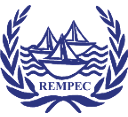Minimization
Recommendations on oil spill waste minimization
Historical data shows that oil spills impacting the shoreline can in extreme cases produce up to 30 times more waste than the volume originally spilled, although small spills have also sometimes created large amounts of waste. However, this varies depending on the characteristics and behaviour of the oil, response techniques and management. It is essential to reduce the amount of waste, thus limiting the difficult problem of dealing with the quantity of waste generated in a very short period, and limiting environmental and economical impacts (Source: IPIECA guidelines).
Waste minimization must be a permanent objective during the clean-up operations and in situ handling of OSW. Expert advice should be obtained for the selection of the best technical choices for clean-up. Emphasis should be put on methodical management of clean-up sites to avoid spreading and secondary contamination of unaffected sites and also by choosing the recycling options for the oiled equipment.
- Waste minimization must start with the first response operations on the site and remain a permanent effort. Information and control of the personnel and companies working on site is essential.
- Use appropriate clean-up techniques to minimise the volume of sediments collected.
- Prefer in situ washing techniques instead of the removal of oiled sediment (e.g. surf washing, sand flushing, etc.).
- Avoid additional contamination :
- Prevent soil contamination by using liners under drums, tanks and at bottom of storage pits, and
- Control the accesses to the clean-up sites and protect them using lining and/ or geo-textiles

